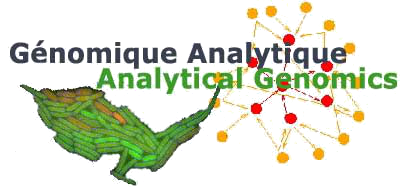

Our work in genomics and protein science involves designing and implementing computational strategies to answer biological questions about the functioning and evolution of biological systems at different scales. We use mathematics (statistics and combinatorics), AI, algorithms and molecular physics to study the basic principles of cellular functioning based on genomic data. Our projects aim to understand the evolution and co-evolution of molecular structures in the cell. Applications are in medicine and environment.
Check here for a list of our software!
Domain annotation and functional classification - We develop new approaches to domain annotation and functional classification for genomes and metagenomes. We model domains through a multitude of probabilistic models to identify structural and functional motifs characteristic of protein families. read more
Protein interactions - Protein interactions are at the heart of the molecular processes that constitute life. We are creating a large scale mapping of PPIs with information at the molecular level. We use sequence- and structure-based bioinformatics methods to predict the conformation of interacting proteins, interaction sites, which proteins interact and how strongly. We study how disorder plays a role in interaction. read more
Phenotypes and genetic mutations - We use sequence evolution to reconstruct mutational landscapes and protein conformational dynamics to predict the effects of disease-associated mutations and to characterize alternative functional conformations to be targeted by drugs. read more
Genome organisation - We design algorithms to extract various biological signals (repeats, synteny block adjacencies, gene copy number variations) from genomes to infer 3D chromosomal structures, to reconstruct genome evolutionary history, to reveal insights on human adaptation to environmental conditions. read more
Transcriptome analysis methods - We design statistical and algorithmic approaches to analyse data and extract information on alternative splicing events, microRNAs, and others. read more
Our methods have multiple applications which play a role in directed mutagenesis, synthetic biology, metagenomics and environment, gene annotation, mutations in genetic diseases.